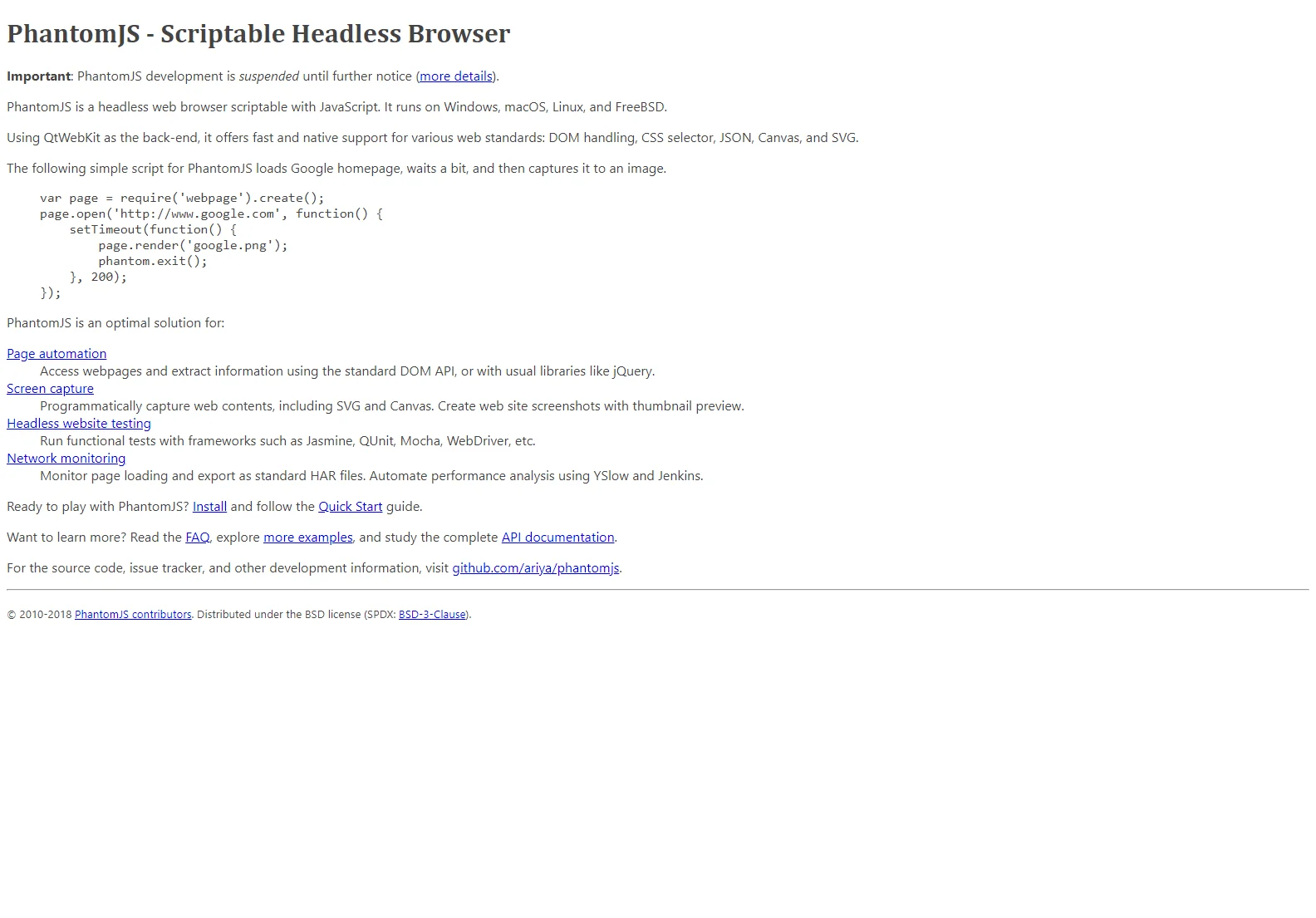PhantomJS: A Scriptable Headless Browser
PhantomJS, while its development is currently suspended, remains a significant tool in the history of headless browsing. This powerful tool, scriptable with JavaScript, provided a way to automate web interactions without a graphical user interface. It ran on various operating systems including Windows, macOS, Linux, and FreeBSD, making it accessible to a wide range of users.
Key Features and Capabilities
PhantomJS leveraged QtWebKit as its backend, offering robust support for web standards. This included:
- DOM Handling: Direct manipulation of the Document Object Model (DOM) for web page interaction.
- CSS Selectors: Efficiently targeting and manipulating elements using CSS selectors.
- JSON Support: Seamless integration with JSON for data exchange.
- Canvas and SVG Support: Capabilities to work with vector graphics and canvas elements.
Use Cases
PhantomJS was particularly well-suited for several tasks:
- Page Automation: Automating tasks like web scraping, form filling, and data extraction.
- Screen Capture: Generating screenshots of web pages, including SVG and Canvas content.
- Headless Website Testing: Running automated tests without a visual browser, improving testing efficiency.
- Network Monitoring: Monitoring page loading performance and exporting data in HAR format.
Example Script
Here's a basic example of capturing a screenshot of Google's homepage:
var page = require('webpage').create();
page.open('http://www.google.com', function() {
setTimeout(function() {
page.render('google.png');
phantom.exit();
}, 200);
});
Comparisons with Modern Alternatives
While PhantomJS is no longer actively developed, its functionality is now largely covered by tools like Playwright, Puppeteer, and Selenium. These modern alternatives offer similar capabilities with active development and community support. They often provide improved performance and broader browser compatibility.
Conclusion
Although its development has ceased, PhantomJS played a crucial role in the evolution of headless browsing. Its impact on web automation and testing is undeniable. For current projects, however, it's recommended to explore and utilize the actively maintained alternatives mentioned above.

